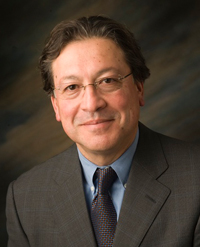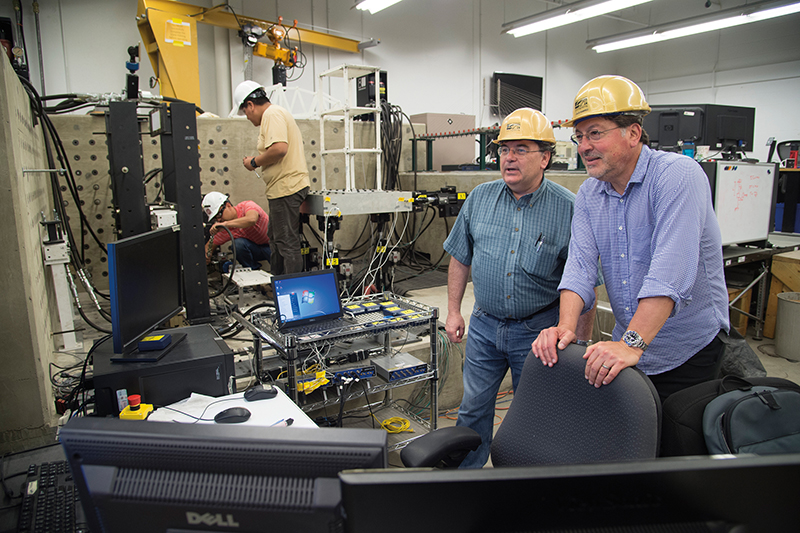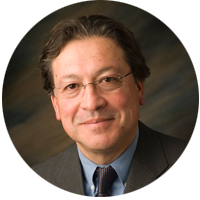
Julio A. Ramirez
Ph.D., The University of Texas at Austin, 1983
M.S., University of Texas at El Paso, 1978
B.S., Universidad Nacional Autonoma de Mexico, 1977
Inducted, 2014
Julio Ramirez has had an outstanding career as a university educator, researcher and National Science Foundation Center director. He has received numerous national awards for his teaching, research and service to professional organizations. He has made many lasting contributions to the structural engineering profession, particularly in earthquake engineering.
Experiencing earthquakes as a child instilled a lifelong curiosity about how people and buildings survive the earth’s tremors. He chose concrete as one of the three picks for an assistantship. That choice and studying under the guidance of John Breen were career door openers for Ramirez. Throughout his career, he has focused on the shear response of reinforced and prestressed concrete structures.
From 2009 to 2014, Ramirez served as director for NSF's George E. Brown Jr. Network for Earthquake Engineering Simulation (NEES), a $105 million grant aimed at mitigating earthquake damage. NEES's impact has been felt on the development of future earthquake engineering researchers and practicing engineers.
In 2016, the National Science Foundation awarded Purdue University a five-year, $4.1 million grant to help coordinate a national initiative to minimize damage to physical civil infrastructure.
A Purdue team led by Ramirez is directing the Network Coordination Office for the National Hazards Engineering Research Infrastructure (NHERI) effort by engineers and scientists to investigate methods for making civil infrastructure safer and communities more resilient. Center partners include UT Austin, under the direction of co-PI Ellen Rathje.
The community of NEES researchers, educators and students encompasses a large group of universities, industry partners and research institutions in the United States and abroad. Already, more than 4,000 citations of NEES work bear testimony to the efforts of the NEES community.
To date, more than 400 multi-year, multi-investigator projects have been completed or are in progress at NEES sites. These projects have produced a wealth of valuable experimental data and continue to produce transformational research and outcomes that impact engineering practice, from analytical models to design guidelines and codes.
In addition, Ramirez serves on code-writing committees and has testified before Congress, emphasizing the crucial value of reinstating federal research funding devoted to mitigating earthquake damage to the nation’s infrastructure.










